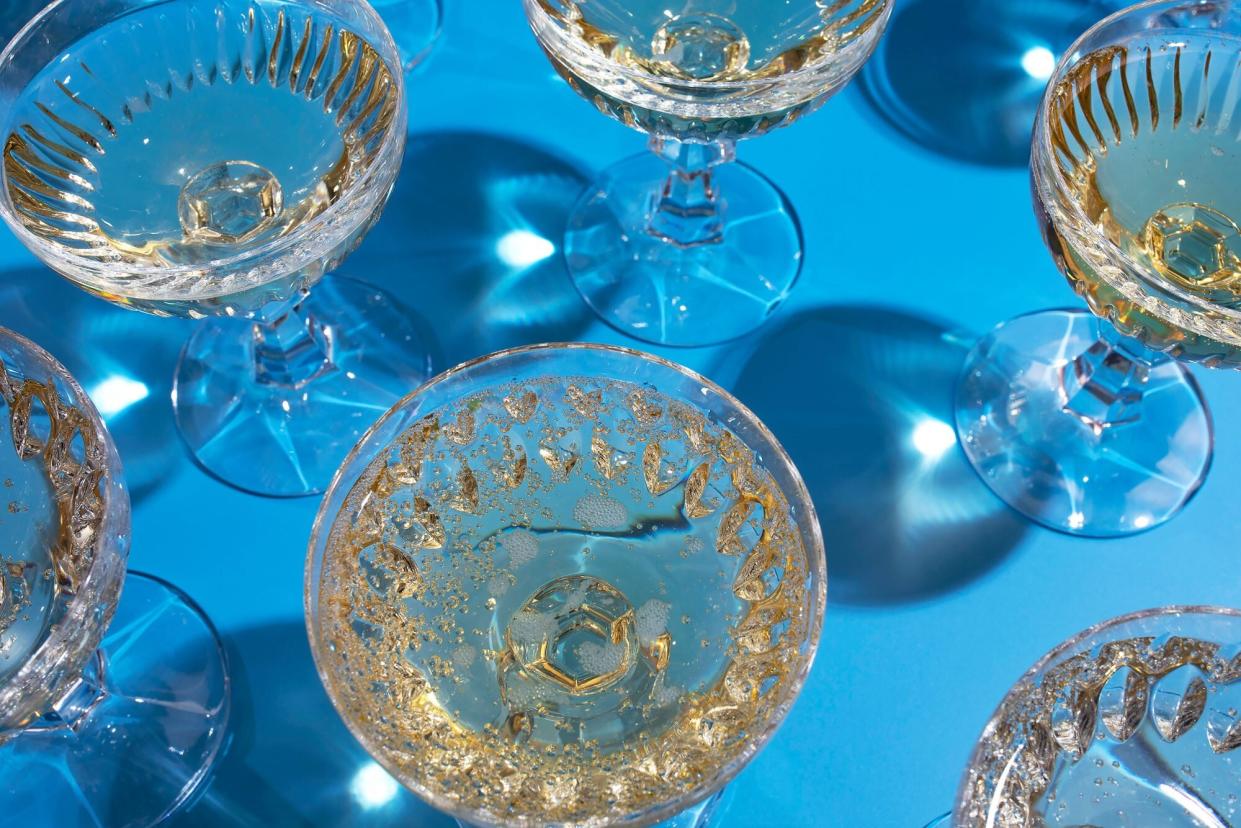Why Crémant is the Unsung Hero of French Sparkling Wine

Yulia Reznikov / Getty Images
Crémant has the unique distinction of being both deeply appreciated by many wine professionals, yet stubbornly under the radar among most consumers. Among the most delicious — and deliciously versatile — sparkling wines in the world, Crémant remains somewhat of a mystery. (And it shouldn't be confused with Cramant, a Grand Cru village in Champagne.)
At its core, Crémant is a category of French sparkling wines that are produced using the same traditional method as Champagne, yet from other regions, and often leaning on grapes other than the Big Three of the world's most famous bubbly (Pinot Noir, Chardonnay, and Pinot Meunier). The main ones you're likely to see on the market are Crémant d'Alsace (often made from Pinot Blanc or Pinot Gris, and sometimes a grape called Auxerrois, in addition to Pinot Noir and Riesling); Crémant de Bourgogne (Pinot Noir, Gamay); Crémant de Loire (Chenin Blanc, Sauvignon Blanc, and even, unexpectedly, Cabernet Franc); and Crémant de Limoux (Chenin Blanc, Chardonnay, and a local variety called Mauzac). Crémants are also produced in Bordeaux, the Rhône Valley (called Crémant de Die), Jura, and Savoie. There are eight total AOCs in France for Crémant production.
Because of the range of terroirs and climates in which Crémants are produced, as well as the different grape varieties, the category represents a wide range of styles and expressions. Still, they are all tied together by their method of production, which involves a secondary fermentation taking place in the bottle — as opposed to in a pressurized tank, as is the case in the Charmat method most famously employed for Prosecco — in order to convert the still wine into sparkling. This lends depth and complexity to the wine, as well as pastry and bakery-like notes from the extended contact with the yeast, which the law stipulates has to occur for a minimum of nine months prior to disgorgement, or clearing the individual bottles of that spent yeast.
What Crémant lacks in widespread recognition, it more than makes up for in value and food-friendliness. The 2017 Dirler-Cadé Brut Nature Crémant d'Alsace, for example, is brisk and briny, with oyster shells, lemon-lime, and a hint of lemongrass that are all joined by lime leaf and serious mineral notes that ride along the crisp finish, making it an excellent aperitif and terrific alongside fried dishes and even more aromatically spiced ones. And it can be found for under $25!
Given the wide swath of French territory that Crémant is produced in, it offers a unique lens through which to experience wine regions that may otherwise be fairly familiar. Crémant de Bordeaux, for example, is a totally novel way of exploring one of the most famous places on the planet. It's a look into the terroir and history of that storied region that more familiar styles — dry reds and whites, the ambrosial wines of Sauternes — don't offer. This is the case with Crémants across all eight official appellations. And that's the delight in them: For often very fair prices, you not only get to experience a different side of French sparkling wine, but also a totally new view of key regions across the country. That's something worth celebrating with a bottle of bubbly. Crémant, of course.

